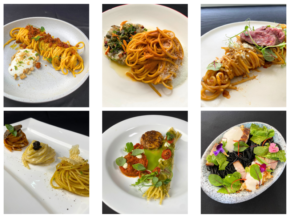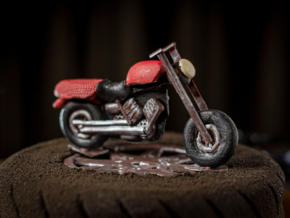What to expect at Manga Hokusai Manga: Links to the Past and Future of Manga
Manga exhibits are rare. You usually hear about them only in the realm of comic book conventions or cosplay competitions. That’s why you can imagine our excitement when the Japan Foundation Manila announced they’re bringing over their travelling exhibit, Manga Hokusai Manga, over from June 17 to July 28 at the Ateneo Art Gallery.
This is the part of Japanese culture seems to resonate with Filipinos more than most: manga. Thanks to the internet, Filipinos can read either raw scans or translated versions of their favorite manga series (One Piece, Naruto, Bleach, Attack on Titan, etc.), yet there are people who want to look deeper into the world of manga.
 EXPLORE CONNECTIONS. People who are fascinated with manga should be able to connect to this exhibit.
EXPLORE CONNECTIONS. People who are fascinated with manga should be able to connect to this exhibit.
Lucky for us, the Japan Foundation’s travelling exhibition about manga has hit our shores. The Ateneo Art Gallery is currently hosting Manga Hokusai Manga, a travelling exhibit that not only introduces people to what is possibly the origin of modern-day manga, but also gives us a glimpse into the story of one Katsushika Hokusai.
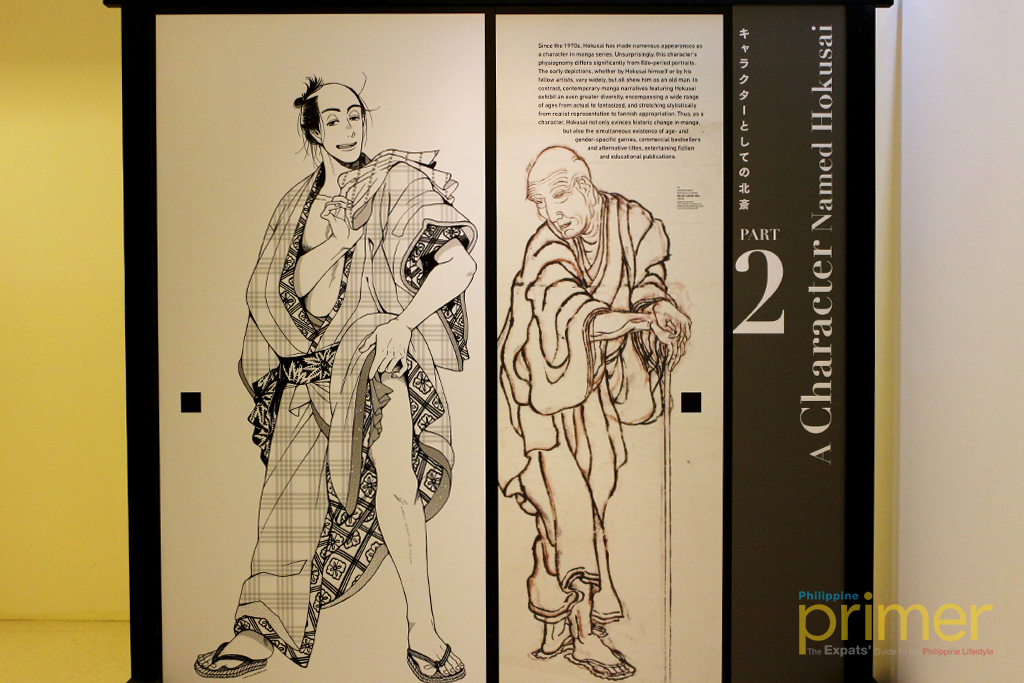 THE MAN, THE MYTH, THE LEGEND. Well, not quite, but Katsushika Hokusai is known as the man who first gave birth to modern-day manga. He’s shown here in two ways: the one on the left shows how today’s artists often imagine him in their mangas. The one on the right: a self-portrait of Hokusai.
THE MAN, THE MYTH, THE LEGEND. Well, not quite, but Katsushika Hokusai is known as the man who first gave birth to modern-day manga. He’s shown here in two ways: the one on the left shows how today’s artists often imagine him in their mangas. The one on the right: a self-portrait of Hokusai.
Hokusai, a renowned painter and illustrator, is best known for The Great Wave (or Unvder a Wave off Kanagawa, Kanagawa oki namiura). His works, compiled into 15 stiched-bound volumes called the Hokusai Manga, show his many different works that not only depict Japan in comic book-style drawings, but also served as the first true “How to Draw Manga” guide for artists in the early 1900s.
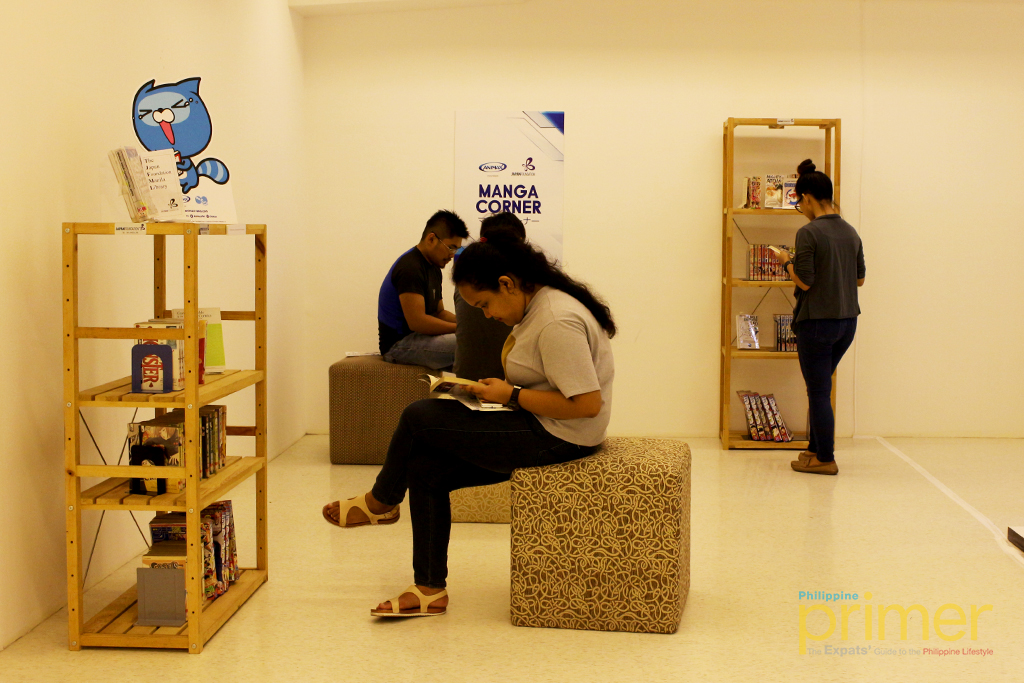 MANGA CORNER. Just so you know, there is a manga corner with takonbons of Death Note and Slam Dunk as well as a couple of volumes of Shonen Jump! from 2016, courtesy of the Japan Foundation of course.
MANGA CORNER. Just so you know, there is a manga corner with takonbons of Death Note and Slam Dunk as well as a couple of volumes of Shonen Jump! from 2016, courtesy of the Japan Foundation of course.
The exhibit itself is mind-blowing, as you’ll see connections you never thought were there. To give you ample time to prepare, here are some of the things you should expect when you see Manga Hokusai Manga:
Manga-ception
 AND HERE’S YOUR GUIDE. It explains what the exhibit is and how to best appreciate it.
AND HERE’S YOUR GUIDE. It explains what the exhibit is and how to best appreciate it.
The exhibit itself is laid out like a manga, and is meant to be “read” like one: right to left and top to bottom. You start off at the right-most part of the Ateneo Art Gallery and go left. There are no arrows to point you in the right direction, but the lay-out of the exhibit dials you in on how manga is usually read.
In case you’re wondering: yes, it does reflect how the Japanese read and write.
Slices of Hokusai
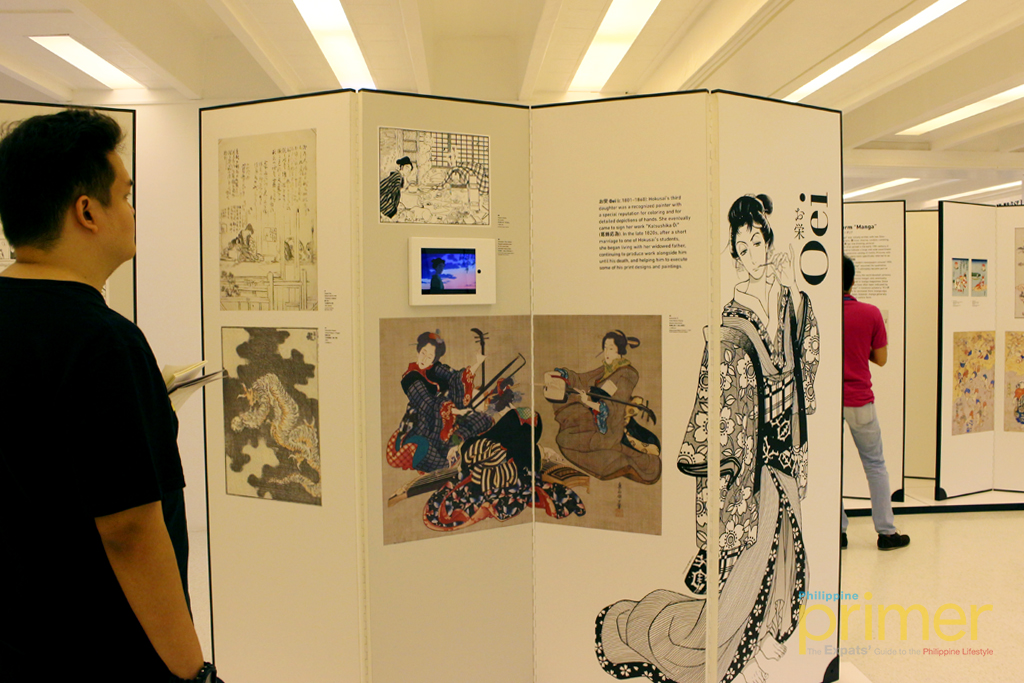 OEI. Hokusai’s third daughter, Oei, is an accomplished painter in her own right. She’s best known for her coloring and how detailed she depicts the human hand. There’s even a trailer for an animated movie she was featured in: Sarusuberi: Miss Hokusai (2015).
OEI. Hokusai’s third daughter, Oei, is an accomplished painter in her own right. She’s best known for her coloring and how detailed she depicts the human hand. There’s even a trailer for an animated movie she was featured in: Sarusuberi: Miss Hokusai (2015).
Yes, the exhibit is about Hokusai’s work and how it is treated as the earliest version of a “How to Draw Manga” book, but it also lets us in on how the man himself might have lived.
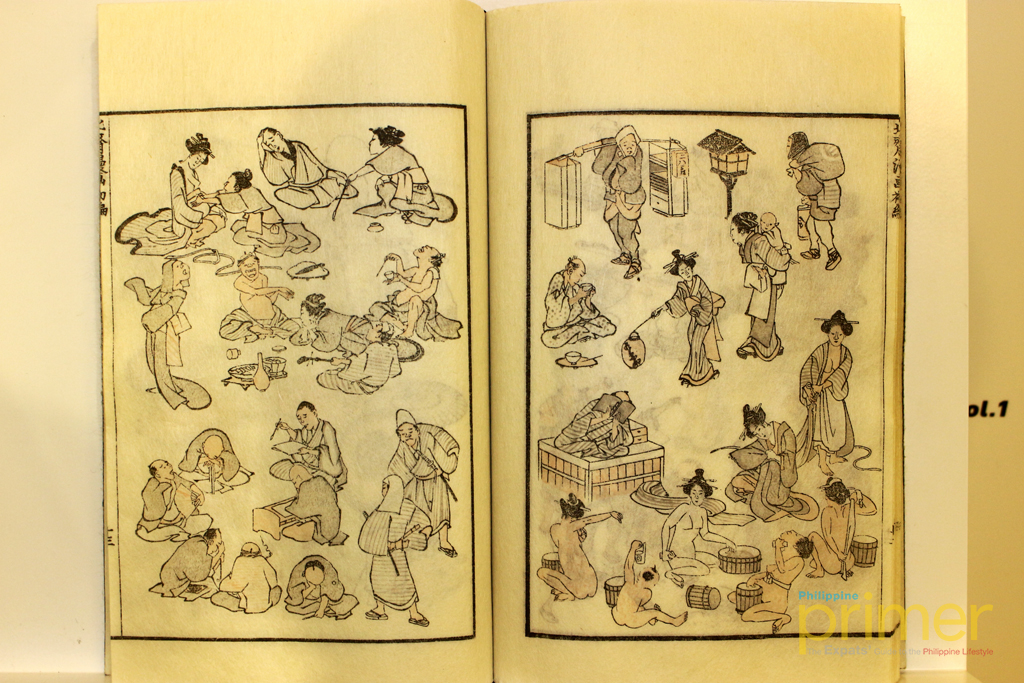 HOKUSEI MANGA VOL. 1. The first of 15. It makes a case for how his works have become a manga manual of sorts.
HOKUSEI MANGA VOL. 1. The first of 15. It makes a case for how his works have become a manga manual of sorts.
There are five parts in all (though only four are marked). Each one shows how Hokusai’s work has influenced today’s manga. You’ll see connections you didn’t know (unless you’re that much of a manga otaku – someone who’s really obsessed with manga).
“How to Draw Manga”
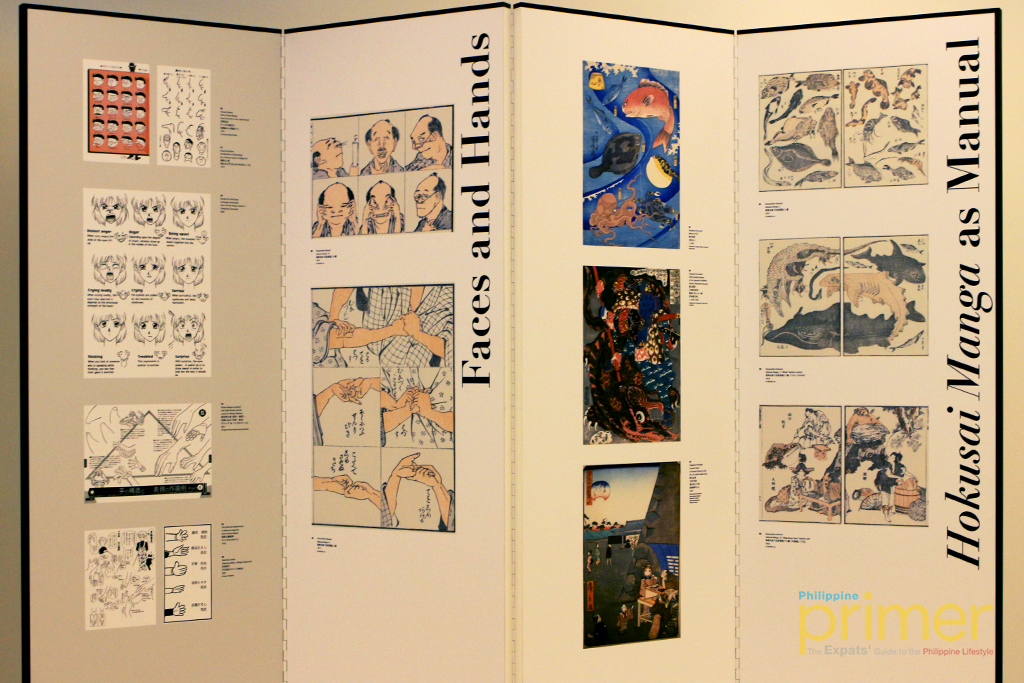 HOKUSAI MANGA AS MANUAL. His works didn’t only serve as inspiration; they were mainly used as reference material for anyone interested in being an artist.
HOKUSAI MANGA AS MANUAL. His works didn’t only serve as inspiration; they were mainly used as reference material for anyone interested in being an artist.
There is a part of the exhibit dedicated entirely to Hokusai Manga and how it inspired How to Draw Manga books (also known as manga manuals) dating as far back as the 1950s.
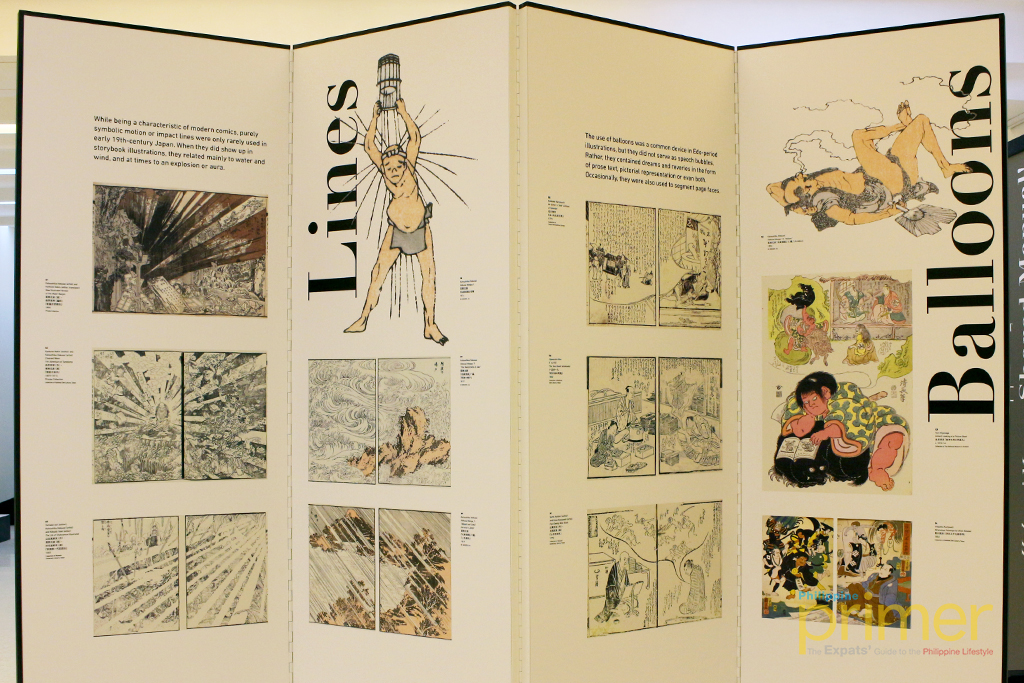 BALLOONS AND LINES. The Speech Balloons we see in manga today weren’t speech balloons at first. They were thought balloons. Lines, however, still have the same function: to show movement and highlight certain elements of the panel.
BALLOONS AND LINES. The Speech Balloons we see in manga today weren’t speech balloons at first. They were thought balloons. Lines, however, still have the same function: to show movement and highlight certain elements of the panel.
Hokusai Manga has always been viewed not as a form of entertainment (though it is entertaining to look at), but more of a manual or guide for students of pictorial art and design.
Doujinshi: Not second rate anymore
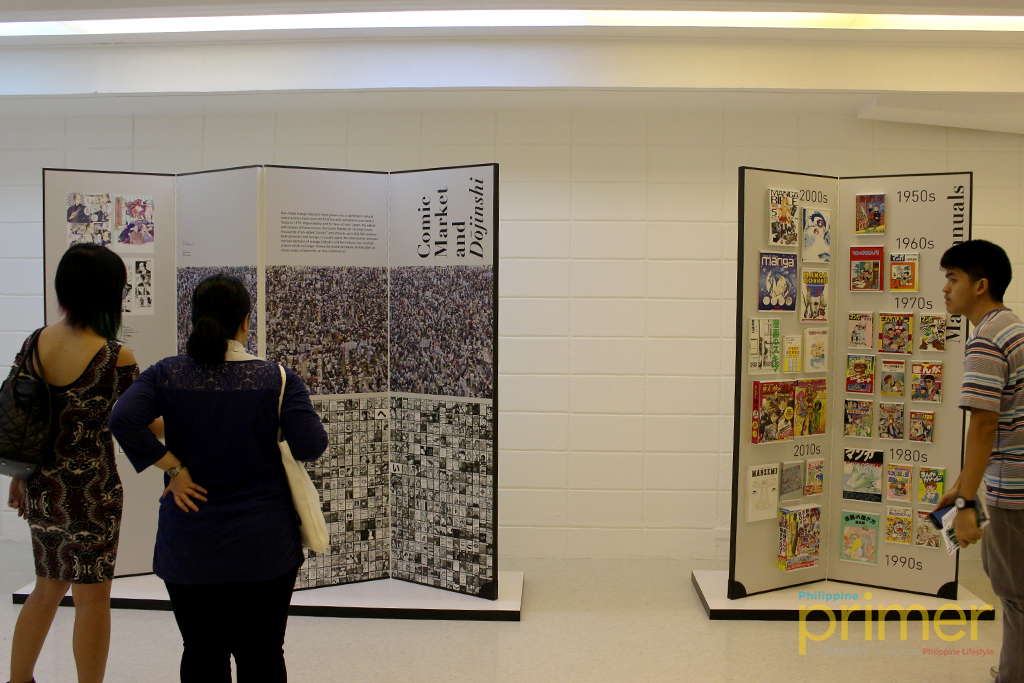 FAN-MADE VS INDUSTRY. The Japanese still make distinctions between the two, but doujinshi aren’t as looked down upon as they used to be, and we have Hokusai to thank for that.
FAN-MADE VS INDUSTRY. The Japanese still make distinctions between the two, but doujinshi aren’t as looked down upon as they used to be, and we have Hokusai to thank for that.
One part of Part 4 talks about how manga isn’t a one-way form of entertainment. The growing number of doujinshi or fan-made manga has made it so that it is an integral part of the culture, and is something that should not be ignored.
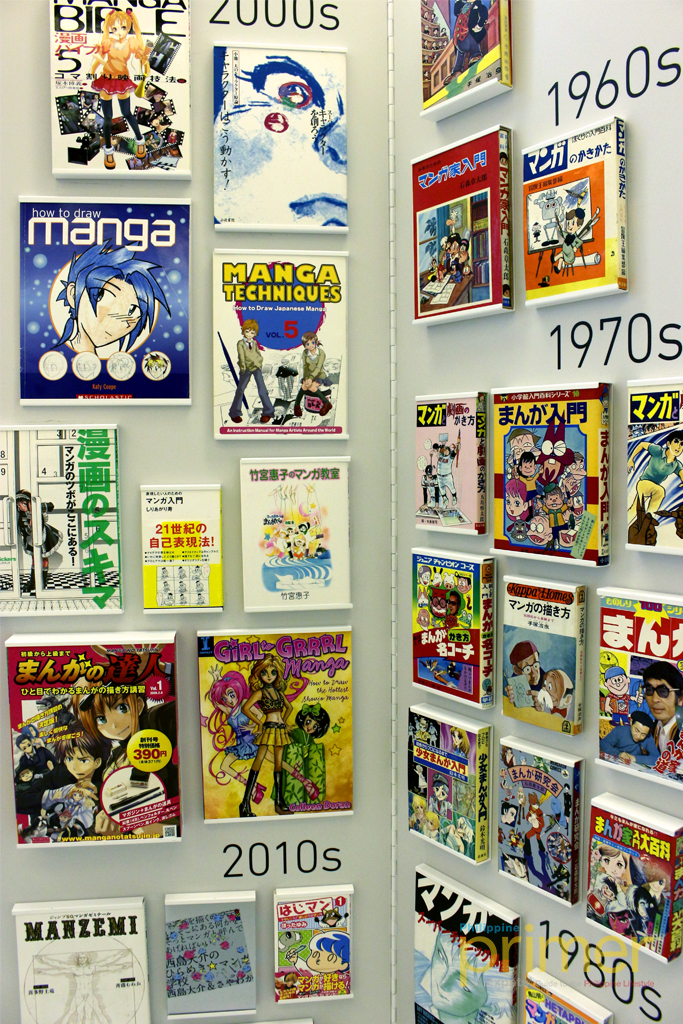 MANGA MANUALS THROUGH THE YEARS. It’s not uncommon to see these in bookstores around the globe. Yes, AROUND THE GLOBE. All of these drew some form of inspiration from Hokusai Manga, whether the creators intended to or not.
MANGA MANUALS THROUGH THE YEARS. It’s not uncommon to see these in bookstores around the globe. Yes, AROUND THE GLOBE. All of these drew some form of inspiration from Hokusai Manga, whether the creators intended to or not.
This, of course, comes at the heels of all those manga manuals inspired by Hokusai.
Modern-day Hokusai
Links between Hokusai Manga and today’s manga are often assumed, but it has rarely been shown as artists have always explored their own way of making manga, from the narrative it takes to how it is drawn.
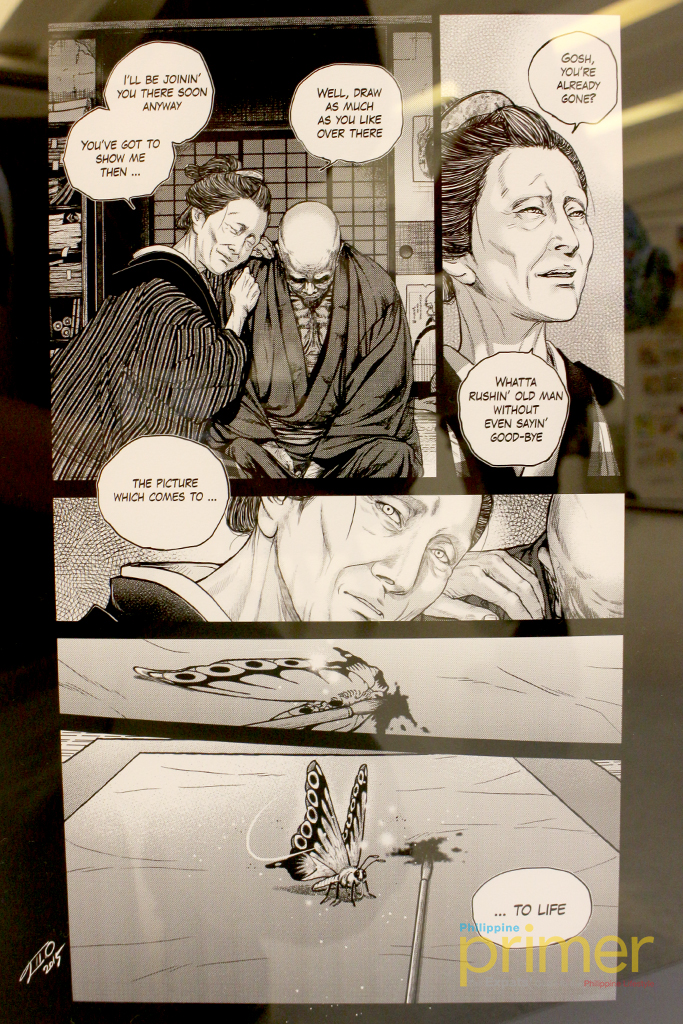 THAT’S ALL FOR NOW. An eight-page work by Odakaya Tetuzoh showing her interpretation of the final moments of Hokusai. Drawings that come to life?!
THAT’S ALL FOR NOW. An eight-page work by Odakaya Tetuzoh showing her interpretation of the final moments of Hokusai. Drawings that come to life?!
Manga Hokusai Manga gives us a rare chance to see artists that revisit Hokusai’s works. One of our favorites is That’s All For Now (Mazu wa kore nite, 2015) by Odakaya Tetuzoh.
It talks about the final moments of a visually-impaired Hokusai (who goes by the name Tetsuzuo in the story) talking to his daughter, Oei, and how he says he wants to continue drawing even past death. It shows his final dream: to see his drawings come to life.
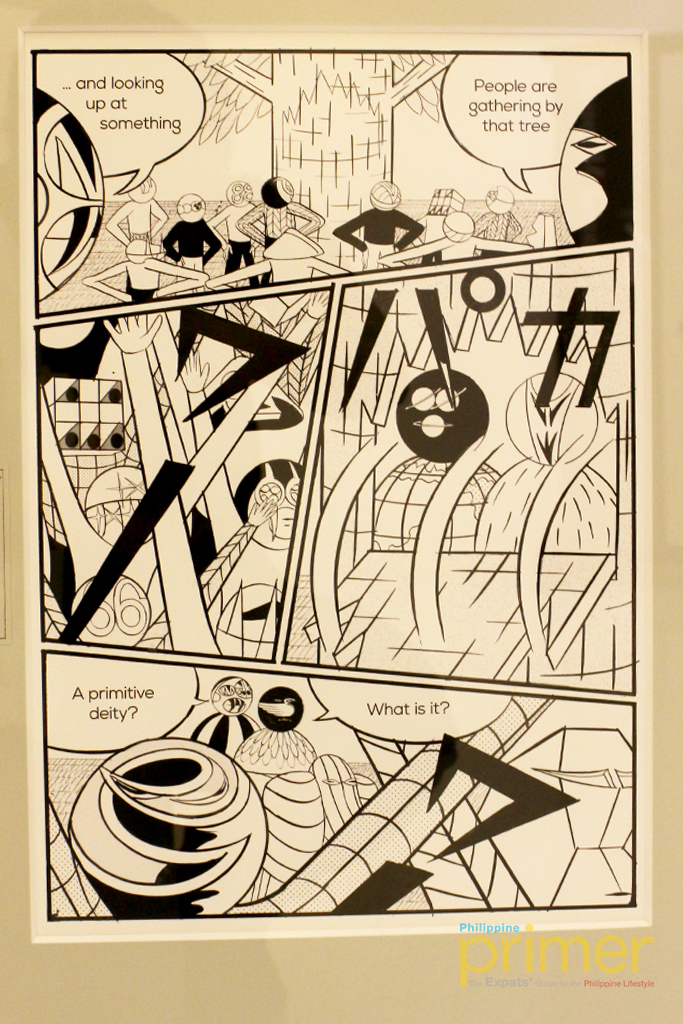 GIANT ELEPHANT. One of the pages from Yokoyama Yuichi’s Giant Elephant. This commissioned piece comes complete with comparisons to earlier mangas made by, yes, Hokusai.
GIANT ELEPHANT. One of the pages from Yokoyama Yuichi’s Giant Elephant. This commissioned piece comes complete with comparisons to earlier mangas made by, yes, Hokusai.
Yet another of our favorites is Yokoyama Yuichi’s Giant Elephant (Kyozo, 2015). It shows his interpretation of some of the works seen in Hokusai Manga, which you can see as smaller panels on the display.
These five are but a few of the things you should expect to see, feel, and/or experience when you visit the Ateneo Art Gallery to see Manga Hokusai Manga. The exhibit will run until July 28. Admission is free.
Watch out for these lectures and a workshop during the display of the exhibit:
- Exhibiting Manga: Intentions, Difficulties, and Potentials, a lecture by Dr. Jacqueline Berndt, Professor of Japanese Language and Culture at Stockholm University (June 30, 3:30 p.m. to 5 p.m.)
- Making Manga: Basic Manga Creative Process Workshop, a workshop by Tintin Pantoja of Comic School Manila (July 15, 9 a.m. to 12 noon)
- Manga and the ‘Manga-esque’: Shifting Definitions and Perspectives, a lecture by Dr. Karl Ian Uy Cheng Chua, Ateneo’s Director for the Japanese Studies Program and Assistant Professor at their Department of History (July 20, 3:30 p.m. to 5 p.m.)
These are also free of charge and open to the public, though limited seats are available. For reservations, please send an email to aag@ateneo.edu.
Written by Andronico Del Rosario







